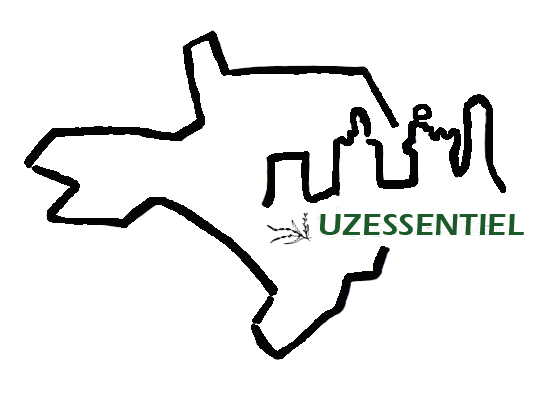Walk on the path of Conques, in Arpaillargues
FR - Beautiful discovery that this interpretive trail of the association La Zébrine in Arpaillargues.
From the washhouse, number 1 of the mandatory stops, to number 14, mulberry trees and "magnans", we discover the built and natural heritage of the small Gardoise town through well designed panels.

The conques? The path of the conques could be the path of the valley, or the hollow, conques being derived from the Occitan conca (valley, hollow) and the Latin concha (shell),...
Follow the guide
Following a trail of some 5 kms, the path of the conques promises very pleasant moments. It makes us glimpse in turn at the Ranquet stream, the river Les Seynes (listen carefully, you may hear the characteristic sound of the woodpecker), the path of Peirière or the one of La Barboye or Fontèze.

It is precisely from this one that our little journey begins... Here is the wash-house, first stage of the path. Currently undergoing a restoration project, (a previous one had been undertaken in the middle of the Nineties by the House of the hand of the Silhol castle, in Nimes) the wash-house was used until 1980. Fed by a spring located in the Coste-Joulène wood, it was one of the 3 wash houses of the village and "would have been built after 1851, the year in which the National Assembly voted a credit intended for the construction of collective washing buildings (for a question of hygiene following the cholera epidemic of 1849)".
A short distance away, the river Les Seynes, a tributary of the Alzon, flows gently. With a total length of 26,7 kms, its starting point is Seynes. On its way, the little rivers crosses other villages, such as Serviers-et-Labaume, Belvézet, Sanilhac-Sagriès, among others...

The quarry, new stop on the path. The Peirière quarry, located near the old Uzès-Nozières railroad line "built in 1883", provided "molasse or sandstone limestone" to the builders of the region for the mas and other mazets, the typical farm building of the region. The topo-guide of La Zébrine comes back on the history of the quarry recalling that, "according to the collective memory, it could have been a place of clandestine Protestant assembly, just like the quarries of Nîmes".
|
Did you know that? Inaugurated the same year as the Orient-Express, the Uzès-Nozières line had a rather short life span. Its "passenger service stopped in 1938 and the freight service between 1939 and 1942".
|
Following the path that goes deep into the woods, between oaks, cades, pines and arbutus trees, one soon reaches the mazet of Jouzille, on the highest part of the path, from where we can see the surrounding region.
|
The conques trail ? It is also a unique discovery trail of the local biodiversity: on the animal side, cicadas, snakes, Pisa snails, but also robins, butterflies. On the plants and trees side, here are the euphorbias, the calaments, the travelling madder, the oaks, the pistachio trees, the elms, the olive trees and the cades... While near the river, one sometimes crosses "ailhantes" or "monte-aux-cieux", the honey locust trees.
|

All along the way, one can guess here and there capitelles, these dry stone huts with corbelled vault, refuge of shepherds and farmers. Sometimes literally overtaken by vegetation, others have had the luck to be preserved and even restored. In all, of the "120 dry stone huts (or capitelles) counted, about sixty have been inventoried" in Arpaillargues.
Like all "dry stone constructions", they are the testimony of "a know-how recognized as a UNESCO World Heritage Site" and are connected to the walls and enclosures that we find on our path. The dry stone walls leading to Arpaillargues are also subject to restoration. It is here that we had the chance to speak with some members of the association La Zébrine, and enjoy a guided tour of a small landscaped area, carefully maintained, an artistic plant walk where everyone can bring his touch of creativity. The capitelle which is there (photo), rebuilt from the vault to the lintel, is proof of the daily commitment of the association in the conservation of the local heritage.
Source and more information : Discovering the history and heritage of Arpaillargues, The restoration of the hut of Coste Joulène by the Zebrine, the dry stone work site.
To watch to learn more about the dry stone constructions : L’art de la construction en pierre sèche : savoir-faire et techniques en pierre sèche (The art of dry stone construction: know-how and techniques in dry stone) on Youtube.





